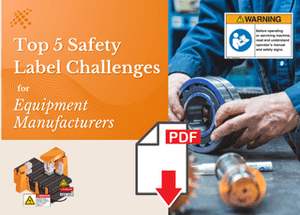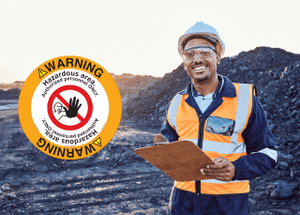Confined Space Warning Signs

Understanding the Hazard: What Is a Confined Space?
Before posting a confined space safety sign, you must first determine whether your work environment qualifies as a confined space or a permit-required confined space under OSHA regulations.
According to OSHA, a confined space:
- Has limited or restricted means of entry or exit
- Is not designed for continuous occupancy
- May include tanks, pits, manholes, silos, storage bins, vaults, pipelines, or process vessels
A permit-required confined space (permit space) is a confined space that poses one or more of the following hazards:
- Potential for a hazardous atmosphere
- Material that could engulf the entrant
- Internal structure that could trap or asphyxiate (e.g., sloping walls or floors)
- Other recognized dangers like exposed live wires, machinery, or extreme heat
Learn more at OSHA’s official page: OSHA Confined Spaces
When Are Confined Space Safety Signs Required?
If a space meets the definition of a permit-required confined space, OSHA requires employers to clearly inform employees of the hazard—typically by posting a danger sign at each entry point.
OSHA Standard 1910.146(c)(2):
“If the workplace contains permit spaces, the employer shall inform exposed employees by posting danger signs or by any other equally effective means... A sign reading DANGER – PERMIT-REQUIRED CONFINED SPACE, DO NOT ENTER or using similar language would satisfy the requirement.”
When Are Signs Not Required?
In cases where entry is restricted by locked doors, access panels, or requires tools to open, signs may not be required—but only if:
- All affected employees are aware of the hazard
- Access is controlled and monitored
- Temporary warning signage or procedures are used during entry
Alternative methods like training programs may substitute for signage, but they must be equally effective in preventing unintentional entry.
The Need for Multilingual Confined Space Signs
In today’s global workforce, effective hazard communication must go beyond English-only signage. In any facilities where workers may not be proficient in English, it’s essential to:
- Use multilingual safety signs
- Incorporate graphical safety symbols
- Provide training in all relevant languages
Benefits of Graphical Safety Symbols:
- Overcome language barriers
- Attract visual attention amid text-based signs
- Convey warnings more readily, even at a glance
OSHA’s Growing Emphasis on Culturally-Aware Safety Communication
The need for inclusive communication isn't just best practice—it's also supported by OSHA’s safety philosophy. According to U.S. Bureau of Labor Statistics, a notable portion of workplace fatalities come from exposure to harmful environments—many involving workers from non-English-speaking backgrounds. One life lost due to poor hazard communication is too many. Investing in clear, inclusive signage can help to increase safety.
Confined Spaces Exist Across All Industries
Confined spaces are not unique to one sector. They’re common in:
- Agriculture (grain bins, manure pits)
- Oil and gas (tanks, pipelines)
- Food and beverage (silos, fermentation vessels)
- Pharmaceuticals (process vessels, ducts)
- Construction and utilities (vaults, trenches, crawl spaces, sewers)
Environments where confined spaces are commonly found:
- Silos
- Storage bins
- Tanks
- Crawl spaces
- Pits and sumps
- Boilers and vessels
- Storm drains and sewers
- Trenches and utility vaults
Each environment can benefit from tailored signage to clearly communicate the specific hazards present.
Best Practices for Confined Space Sign Design
To ensure maximum effectiveness, modern confined space signage should:
- Use ANSI/ISO-compliant symbols
- Include multilingual messaging based on your workforce
- Feature durable materials for indoor/outdoor conditions
- Follow standardized formats like ANSI Z535 for layout and visibility
Create Custom Confined Space Signs with Clarion Safety
Our team makes it easy to stay compliant and protect your workforce with high-quality, custom confined space safety signs.
- Design your sign online with our intuitive Product Designer Tool
- Choose from nine ANSI-approved color options
- Add symbols, English + multilingual text for universal clarity
- Strong adhesive backing and square corners for easy application
- Durable materials for long-lasting performance in harsh environments
With over 30 years of industry leadership, Clarion Safety delivers fast turnaround times, exceptional service, and proven expertise in safety communication.
Start designing your confined space signs now and protect your team with confidence.



